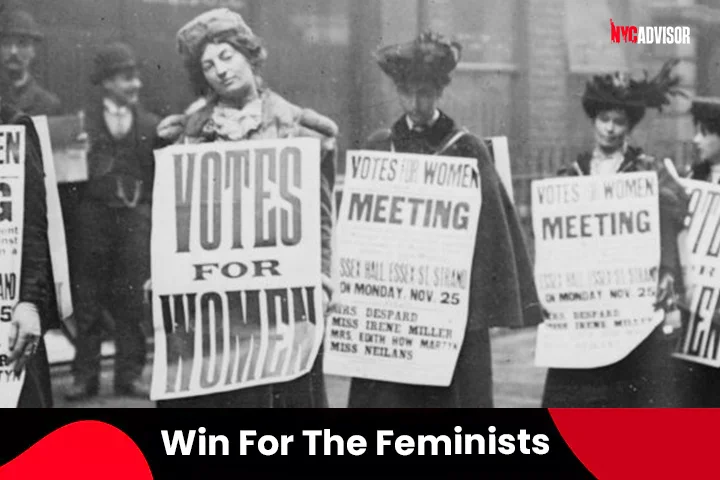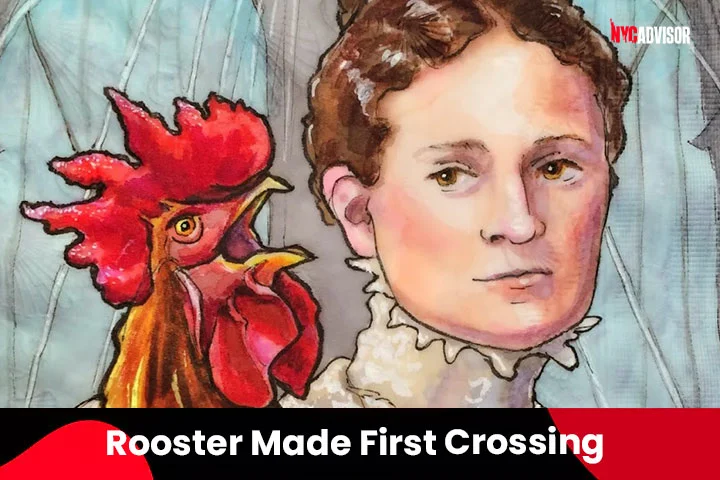Instead of being built for political benefit, the Brooklyn Bridge was created because it was necessary at the time. The undertaking was started with the laudable intention of making it easier and more secure for people living in Brooklyn to travel to and from the other neighborhoods. John Augustus Roebling, an architect born in Germany, created its blueprint. Unfortunately for him, the very first few days of the project were marred by misfortune.
Let's take a trip through the History of New York and facts about the Brooklyn bridge and entertain ourselves with some of the most fascinating information we can find about the Brooklyn Bridge.
A small amount of bribery was required to begin building the Brooklyn bridge.

Bribery was used to help secure funding for the Brooklyn Bridge, which was conceived as a way to make it easier for people living in Brooklyn to commute to other municipalities. But in order to get such a worthy endeavor off the ground, legislator William M. Tweed paid bribes of up to $65,000. The actual objective was to obtain financing in the amount of $1.5 million to build the bridge, and this was the covert purpose. After that, he went on to become one of the primary stockholders of the bridge shares, and he also joined a commission that managed the finances of the organization. He stole a significant amount of money from the initiative before he was caught and punished for his unethical behavior, during which time he fled the country.
This suspension bridge was the longest in the world when it was built.

During the 19th century, several suspension bridges were destroyed by accidents, which led to a decline in the popularity of this type of structure. However, the designer of the Brooklyn Bridge was able to determine the causes of the problem and devise a solution by incorporating a web frame into the structure. In the 1850s, he moved on to construct a total of four bridges. The construction of the Brooklyn Bridge was, without a doubt, his most significant accomplishment and a Cultural landmarks in New York. It remained the largest bridge until the neighboring Williamsburg Bridge was built in 1903, at which point it was surpassed in length.
A sneaky contractor was the one who added the wire of poor quality to the mix.

John Augustus Roebling was in charge of overseeing the accumulation of construction materials during this time. Still, he was oblivious to the fact that he had been conned out of his cable wire. Contractor J. Lloyd Haigh smuggled in a significant quantity of low-quality wire, some of which was even defective, and mixed it up.
The defect was not discovered until after the cables had already been incorporated into the fixed bridge, at which point it was no longer possible to replace them. Instead of doing that, the construction crew ramped up the number of security measures they had in place.
They installed significantly more wire than the computations indicated was required, and they worked frantically to conceal the discovery from the general public. For his part, Haigh was not brought to justice for this offense; however, he was apprehended and sentenced to prison for falsification in connection with a separate investigation.
Twenty people lost their lives as a result of the collapse of the Brooklyn Bridge.

One of the most tragic losses was that of the bridge's architect, John A. Roebling, who was born in Germany. In 1969, before construction had even begun, he was getting measurements when he stumbled and was squashed between a boat and some pilings. He died as a result of his injuries. He was admitted to the hospital for a few days of treatment, during which his digits were amputated to stop the spread of tetanus; however, he could only survive for a few more days after that.
How many people died building the Brooklyn bridge? Other construction employees lost their lives during the height of the project when they became victims of various illnesses or plummeted from the structures that reached a height of 276 feet. Even though there is no government data accessible, it is estimated that between 20 and 30 individuals have lost their lives as a result of the outbreak. Other significant and minor accidents were not connected to them in any way.
The project turned out to be an early win for the feminists.

Emily Warren Roebling, Washington Roebling's wife, took over as the bridge's de facto principal architect after Washington Roebling fell sick. Emily Warren Roebling was the third member of the Roebling family to work on the bridge.
Although Emily began her tenure by serving as a liaison between her husband, who was incapacitated and residing in an apartment in Brooklyn Heights with a view of the construction, and his employees, she soon assumed full command of the project and oversaw the design, construction, and business management of the enormous undertaking.
Emily Warren Roebling, a pioneering female architect who was a leading force behind the construction of the bridge, is now widely acknowledged for her contributions. Emily went on to obtain a degree in law from New York University after her time spent working on the bridge, and she published articles advocating for female equality during her time there.
No one is able to determine the exact color of the bridge.

In 2010, when it was announced that the Brooklyn Bridge would be repainted, the decision was met with much debate over the bridge's initial hue. Some old-timers maintained that the suspension bridge's original hue was a prideful bronze, which the new designers have dubbed "Brooklyn Bridge Tan." (There were complaints about the "Queensborough Tan" alternative.) The other side of the debate claimed that the icon's initial color was "Rawlins Red," a shade made from the iron oxide from the namesake mountain community in southern Wyoming. Historical records and hand-colored lithographs backed this claim. Brooklyn Bridge Tan ultimately won this battle, yet it’s a fascinating places to visit in new york.
For twenty years, the Brooklyn Bridge held the title of the longest bridge in the world.

Just two years before beginning construction on his New York endeavor, John Augustus Roebling created a piece of suspension bridge history with the modestly titled John A. Roebling Suspension Bridge, which stretched 1057 feet over the Ohio River and connected Covington, Kentucky, and Cincinnati. The bridge was named after Roebling. That undertaking was put to disgrace by Roebling's construction of the Brooklyn Bridge, which had a principal span that was approximately fifty percent longer than its predecessors.
The Brooklyn Bridge was the largest suspension bridge in the world for a period of twenty years. Its primary span was measured at 1595 feet, and its overall length was 5,989 feet. In 1903, it was ultimately deposed as champion, and its replacement was none other than its companion East River connection, the Williamsburg Bridge. The last bridge's primary span was longer than the Brooklyn Bridge's, but only by 4.5 feet, despite the latter being 7308 feet long in total.
A rooster made the original crossing of the bridge.

In a strict sense, the rooster shared first place with the other bird. On May 7, 1869, a week before the bridge's formal inauguration, President Chester A. Arthur and many other dignitaries witnessed history in the making when Emily Warren Roebling rode a carriage across the span for the very first time. A rooster, considered a positive omen, was constantly resting in Emily's lap throughout the conversation.
In the year 1884, twenty-one elephants made their way across the Brooklyn bridge.

How can you persuade one of the largest communities in the United States that its newest bridge can provide secure transportation to all of the city's commuters? Elephants. Because a circus canopy was the most typical environment for trained elephants in the 1880s, the city of New York requested that the enterprising showman P.T. Barnum lead a procession of 21 elephants across the Brooklyn Bridge in May of 1884. This demonstration was intended to demonstrate how robust the bridge was. It is one of the facts which makes it a tourist attractions in new york.
Wine was stored in the bridge's compartments during its original occupancy.

This is the bridge for you if you think a fine drink of wine would be the perfect companion for a moonlight saunter across a river and if you think this bridge would be beautiful in the evening. Underneath the bridge's anchorages, significant tunnels measuring up to 50 feet in height were constructed by engineers.
Because of the consistently cold temperatures they offered, these granite-walled storage places made for the ideal wine cellars; until World War I, they were available for hire to the general public. The production company A. Smith & Co. paid a monthly rent of $500 for the cellars on the Brooklyn side. In contrast, the whiskey distributor Luyties Brothers paid a hefty sum of $5,000 for the valuable real estate located beneath the Manhattan anchoring.
The fallout shelter was expanded to include yet another compartment.

At some point in time during the Cold War, one of the bridge's compartments was converted into a makeshift emergency sanctuary that was equipped with provisions of food and water, as well as medical supplies. This fallout shelter had been forgotten about ever since the end of the Cold War. Still, in 2006, it was brought back to light during a regular examination of the bridge's structural integrity.
Where George Washington once slept is now home to the Brooklyn Bridge.

A marble monument can be found at the Manhattan anchorage of the Brooklyn Bridge. It serves as a memorial to the ground below, which was the site of the very first presidential residence in the United States. The place in Lower Manhattan, which was also referred to as the Walter Franklin House and the Samuel Osgood House, was where George Washington resided for the first ten months of his tenure as the Chief Executive Officer of the United States. Before being demolished in 1856, the house had been there for the previous 85 years, when it was located at the intersection of Cherry Street and Pearl Street.
Roebling spent a lot of money to purchase the bridge.

Roebling was the mastermind behind the construction of the Brooklyn Bridge, but he would not survive to see it finished. In the year 1869, while Roebling was making calculations for the upcoming bridge, he had his foot squashed by a steamboat. As a consequence of these wounds, the engineer ultimately succumbed to tetanus and passed away in July 1869.
Roebling's son replaced him and had similar luck.

After Roebling passed away, the role of principal engineer on the bridge project was taken over by Roebling's son, Washington Augustus Roebling. The younger Roebling quickly found himself struggling with an issue of his own. In order to construct the enormous structure's substructure, workers toiled away inside caissons, which are hermetically sealed compartments that kept the riverbank dry and made excavating possible.
Compressed air was necessary for breathing and laboring deep within the caissons, which meant that employees who rose up from the depths were susceptible to "caisson disease," which is more commonly known as the bends today. In the year 1872, Roebling became ill with a condition known as decompression sickness and was forced to spend his time in bed.
A stamp occurred on the bridge not long after it t opened to traffic.

The Brooklyn Bridge was first opened to the public on May 24, 1883, and a relative lack of conflict characterized its first five days of operation. On May 30, however, catastrophe struck when either a woman stumbling or a report of an impending collapse prompted panic among the massive throng of pedestrians traversing the bridge. Either way, the panic caused a chain reaction that led to the bridge's collapse. The crowd’s mad dash across the bridge to get away from the police resulted in the fatalities of 12 people and significant injuries to another 36.
Over the course of its history, the bridge has been referred to by a wide variety of titles.

The cable-stayed and suspension bridge connecting lower Manhattan to its neighbor on the other side of the East River was formerly known as the "Brooklyn Bridge.” Still, the name was altered at some point in time. The Brooklyn Bridge got its name in 1867 from the first newspaper to refer to it, the Brooklyn Daily Eagle. In spite of this, when the bridge was first constructed, people continued to refer to it as the "Great East River Bridge" and the "Great East River Suspension Bridge." When the bridge was first opened for traffic in 1883, it was assigned the name the "New York and Brooklyn Bridge" as its official name. (The borough of Brooklyn did not become a part of the city of New York until the year 1898.) As a sign of community pride in Brooklyn, the bridge's original name was formally altered to "Brooklyn Bridge" in 1915.










